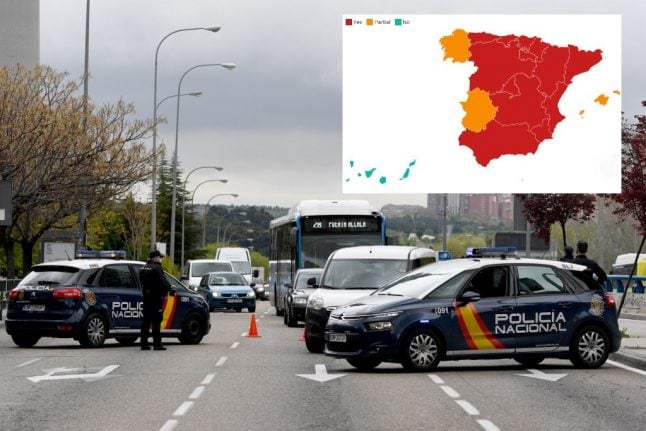But different measures are in place depending on the region of Spain with several regional governments yet to announce what confinement measures they will take ahead the long weekend.
The Madrid region, which has 32 healthcare zones under perimeter lockdown, has permission from the central government to impose a perimeter confinement of the region only for the duration of the puente weekend, while Catalonia has shut regional borders and introduced perimeter lockdown around municpalies over the puente to prevent people moving around within the northeastern region itself.
Valencia on Friday closed its regional border ahead of the weekend, a measure that will last one week.
READ ALSO: EXPLAINED: What are the restrictions in place in each of Spain's regions right now?
The Basque Country is entirely closed with people told to stay within their own municpalities while in Galicia only some municpalities are confined to city limits while the rest of people within the region can move about freely.
There are perimeter confinements now in place around Santiago de Compostela, A Coruña, Arteixo, Pontevedra, Vigo, Lugo, Poio, Marín, Ames, Teo and Vimianza as well as around Ourense, Barbadàs, O Carballiño, O Irixo Boborás, Verín, Oímbra and Vilardevós.
Andalusia will close borders of the entire region to prevent people visiting and also has confined those within Sevilla, Jaen and Granada from coming and going.
Cantabria took the decision to impose a perimeter confinement of the region on Thursday.
In the Balearic Islands, only those within the urban centre of Manacor have restrictions in place.
Extremadura has left its regional borders open but placed perimeter confinements around the municpalities of Cilleros, Hoyos, Perales del Puerto, Cabezuela del Valle, Jerte, Tornavacas, Jarandilla de la Vera, Talaveruela de la Vera, Valverde de la Vera, Villanueva de la Vera, Madrigal de la Vera, Hervás, Alcuéscar and Arroyomolinos in Cáceres province and La Roca de la Sierra, Almendralejo, Usagre and Villanueva del Fresno in in Badajoz province.
Only the region of the Canary Islands have no perimeter confinements in place.
Check the restrictions by hovering over the regions in the map below:
- Most of Spain's regions to close borders ahead of long weekend to halt Covid-19 spread
- MAP: These are the curfew hours across Spain
- MAP: Which zones in Madrid have new restrictions and what are they?



 Please whitelist us to continue reading.
Please whitelist us to continue reading.
Member comments